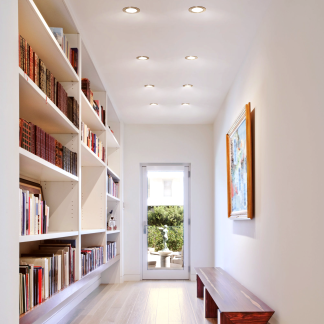
- What are the Recommended Lighting Levels for Residential and Office Spaces?
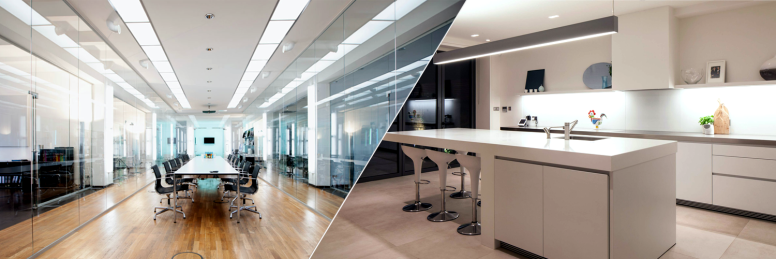
Lighting for an area in the work place or home should be sufficient so that a person can move around safely, use the facilities and be able to work while not having any sides effects such as straining eyes. Getting the right light for an area can be difficult as there aren’t always clear guidelines on recommended light levels. Additionally, it can be difficult to measure and understand how much light is needed. Light intensity is measured in Lux, this can be used as a guide to how much light in lumens is needed to adequately light an office space or residential space. One lux is equal to one lumen per square meter.
- Lighting for Residential Spaces
A well-designed lighting system takes into account the possible use of every room and how much light is needed for it.
Knowing the purpose of each space in a property will give you the ability to create adjustable lighting systems. For example, a kitchen that may double up as a dining area or a space of work which could use dimmers to create a relaxed eating area or brighten up to allow ease of cooking. Or even a spare room that may double up as a study where dimming, Sceneswitch or smart lighting would enable a change to the colour temperature, from a relaxing warm white bedroom to a bright cool working environment, perfect for concentrating and reducing eye strain. If you take into account these possibilities when lighting your home you can ensure you are not under lighting or over lighting your spaces. In addition to the amount and type of light emitted it may be beneficial to consider where pendant or wall lamps may feature to highlight specific areas for reading and food preparation.
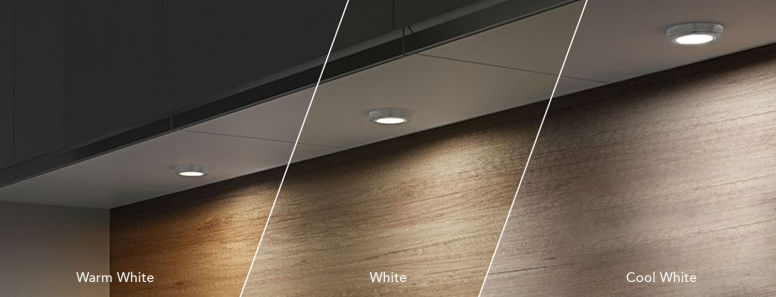
High colour rendering lighting may be significant and is an aspect that needs consideration. CRI is the measurement of how colours look under a light source when compared with sunlight. The index is measured from 0-100, with a perfect 100 indicating that colours under the light source appear the same as they would under natural sunlight.
- How to Light Specific Rooms
- Hallways
Downlights that sit flush with the ceiling can maximize headroom in what’s often a cramped space. A lux level of 100 – 150 is recommended. Lightsave recommends using a GU10 fitting such as the Integral Evo Fire Rated Downlight Fitting to allow ease of bulb replacements.
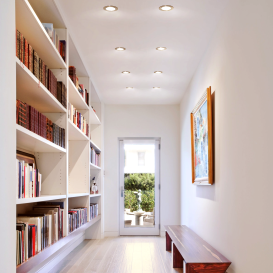
- Living Rooms
Living rooms usually require a relaxed setting and the ability to adjust lighting levels. Ideally, illumination should be set between 100 – 150 lux with the flexibility to be reduced to 60 lux.
Lightsave recommends flush downlights with an LED wall dimmer, scene switch or smart bulbs installed to allow ease of dimming and colour temperature.
Alternatively or as well as wall-mounted uplighters to avoid glare while table lamps can provide the localized lighting required for specific activities.
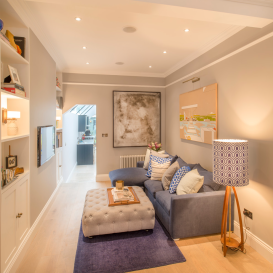
- Kitchen and Dining Rooms
Tasks such as cooking, eating and working in carried out in these areas make high lux levels mandatory. 150 – 200 lux is recommended at floor levels and 400 lux for worktops – downlights can deliver focused high lux lighting.
Lightsave recommends flush downlights with an LED wall dimmer, scene switch or smart bulbs installed to allow ease of dimming for relaxing and eating and colour temperature for concentration and focus from warm white to cool white. Consider pendant lighting for feature pieces or to highlight specific areas of work. Under cabinet lighting or strip lighting can also highlight features within the kitchen area as well as supplying light in on work top surfaces.
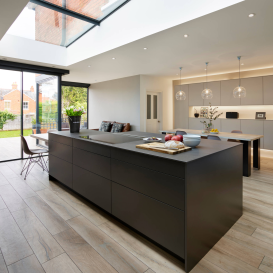
- Bedrooms
Lighting levels in the bedroom should be controllable with the ability to provide 60 – 100 lux of light up to a maximum of 150 lux. For task lighting, consider localized lighting up to 400 lux. High CRI lights are a welcome addition – for example, it can help choose clothes.
Lightsave recommends flush downlights with an LED wall dimmer, scene switch or smart bulbs installed to allow ease of dimming for relaxing and eating and colour temperature for concentration and focus from warm white to cool white.
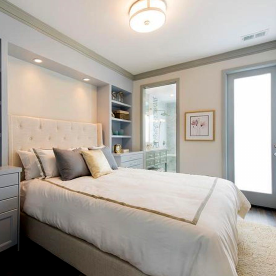
-
- Lighting for Offices

Office lighting requires more attention because the employer has a legal responsibility to meet the recommended lighting levels.
According to the 1974 Health & Safety at Work Act, the employer must ensure the health and safety of their employees. This includes the responsibility to provide the necessary lighting for work to be completed safely. The act further states that the employee’s eyesight or overall health must not be in danger at any moment.
Regulation 8 of the Workplace Regulations Act 1992 dictates that the employer must make sure that:
- There is natural light, where possible.
- Suitable and sufficient emergency lighting is provided where needed.
- Every workplace has suitable and sufficient lighting.
Illumination levels in workplaces are generally determined by the tasks performed in the working area.
More often than not, offices are over lit due to the overwhelming use of outdated lighting systems. These lighting systems were intended for paper-based tasks, which required light levels of 500 – 750 lux. Today’s work generally revolves around computer-based tasks where lighting levels of 100 – 500 lux will suffice.
The HSE breaks down lighting requirements into five main categories.
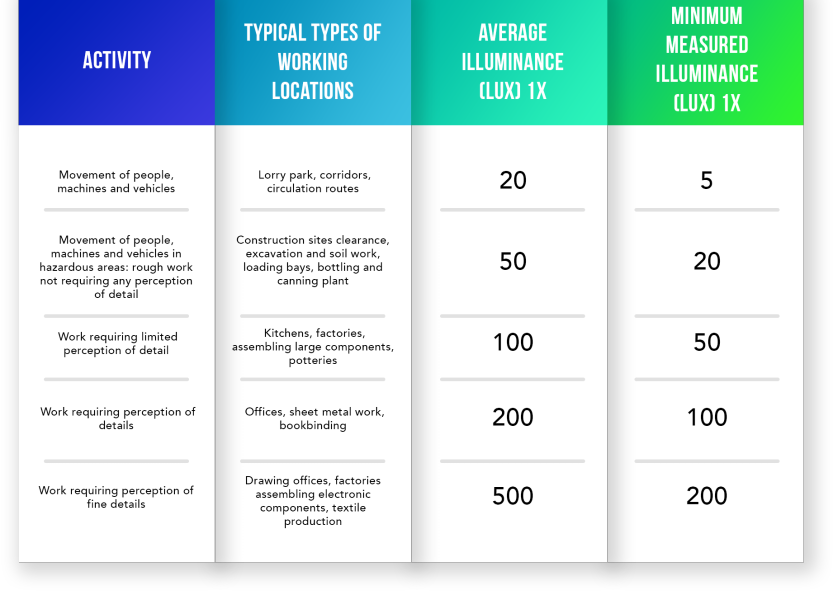
A summary of the important factors of lighting in the workplace are as follows:
- Hazards should be easily noticeable so they can be assessed
- All light it suitable for the work of work undertaken and the environment it is undertaken in
- The task or job being undertaken should have sufficient light (or illuminance)
- Different colours should be distinguishable to promote safety
- No stroboscopic effects, flickers or glare should be caused by the lighting
- Avoids the effects of veiling reflections
- Adjacent areas should not have substantially different levels of lighting
- Individuals needs must be considered and met
- No light should pose a health and safety risk
- It should be accessible so maintenance can be carried out or the unit can be replaced with ease
- Safe emergency lighting